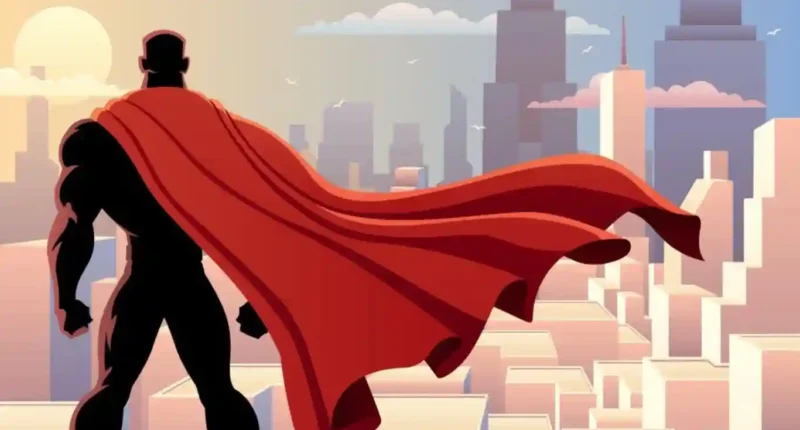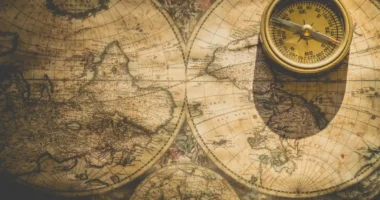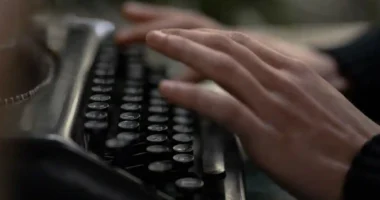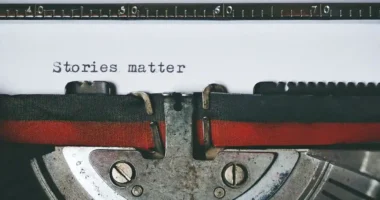Three steps make up the typical story framework known as The Hero’s Journey. The call for adventure first interrupts the hero’s routine life. Second, the hero faces challenges and foes during their journey. They finally change and go back home. Mythology may be both intriguing and complicated at the same time. Inspired by these fables, author Joseph Campbell researched myths and established the well-known claim that practically all myths and certain other story genres share themes, and the framework of the hero’s travels is nearly the same. He identified various levels of adventure, and these have come to be known as the hero’s journey.
What is the Hero’s Journey?
The mythology book The Hero with a Thousand Faces by professor Joseph Campbell popularised this paradigm. Here are Campbell’s original three stages of the hero’s journey:
- The Hero leaves the Ordinary World in the Departure Act.
- The Hero enters the “Special World,” where he faces numerous trials and tribulations before becoming a genuine champion. This is known as the “Initiation Act.”
- The Hero returns triumphantly in the Return Act.
Everything from Star Wars and Arrival to horror literature and The Lion King has elements of the Hero’s Journey. However, authors are not required to adhere to it exactly. Instead, think of it as a map that allows you to deviate from the intended course whenever you wish. But if you’re having trouble deciding what should occur next, it can serve as a guide for the narrative arc and propose what the next significant event should be.

The 12 Steps of the Hero’s Journey
As the hero travels through the world, they will experience inner and exterior transformation at each stage of the journey. The Hero’s Journey serves as a model for both story points and character development. The 12 steps of the hero’s journey are as follows:
Ordinary World
The trip has not yet begun. The status quo, or their commonplace, everyday life, must be understood before our Hero enters a strange new realm. This first section is responsible for setting the scene and presenting the Hero to the audience. Before the voyage even starts, it allows readers to relate to the Hero as a “regular” person in a “normal” milieu. For eg- When Rocky Balboa first appears, he is introduced as a mediocre boxer and loan collector who is just trying to get by day to day in a destitute area of Philadelphia.
Call to Adventure
The main goal of the call to adventure is to jolt the Hero out of their comfort zone. They typically face a hurdle or problem at this time that they can’t ignore. As Campbell notes in Hero with a Thousand Faces, this spark might appear in a variety of ways. For eg- Undisputed World Heavyweight Champion Apollo Creed intends to make a huge fight intriguing by inviting a relative unknown to take on him. He calls Rocky because he finds the moniker, “The Italian Stallion,” intriguing.
Refusal of the Call
Initially, the Hero can reject the call to action. Perils like spiders, trolls, or even a spooky uncle waiting back at Pride Rock make it unsafe and dangerous. Anyone would be prompted to pause by it. For instance, in Star Wars, Luke Skywalker initially declines to accompany Obi-Wan on his quest to save the princess. He only changes his mind after learning that stormtroopers have killed his aunt and uncle. For eg- Rocky responds to Creed’s invitation with “Thanks, but no thanks”. Given that he lacks a trainer and is extremely out of shape, he is hesitant.

Meeting the Mentor
The Hero has made the decision to embark on the journey, but they are not yet ready to fly. They are still far too inexperienced, and we don’t want them to belly-flop off the cliff in style. Enter the mentor: a supporter who ensures the Hero doesn’t completely screw up or get themselves killed. The mentor offers hands-on instruction, profound insight, a kick in the pants, or something more ethereal like grit and self-assurance. Old wise wizards appear to enjoy mentoring. But mentors come in all shapes and sizes, from suburbia karate teachers to recluse witches. Like Q in the James Bond series, they might actually supply weaponry to prepare for the difficulties that lie ahead. Or maybe the mentor is a physical thing, like a map. They always get the Hero ready for the following move. For eg- Rocky’s talent is recognized by veteran boxer Mickey “Mighty Mick” Goldmill, who begins preparing him both physically and emotionally for the battle.
Crossing the First Threshold
The Hero is now prepared for the journey and fully dedicated to it. The adventure now really shifts into high gear as the Departure stage comes to a close. The balloon rises, the ship sets sail, the romance starts, and the wagon moves on, according to Vogler. For eg- When Rocky enters Adrian’s home and approaches her to ask her out on a date, he wholeheartedly embraces the adventure.
Tests, Allies, Enemies
We definitely perceive a change once we enter the Special World. The unfamiliarity of this reality and its new laws may confuse the Hero. As our protagonist adjusts to this new reality, this is typically one of the longest stages in the novel. This step frequently increases the number of characters. Once the main character is in the Special World, he will encounter friends and opponents, or enemies who become allies and vice versa. They will teach him a new set of guidelines. Vogler notes that saloons and sleazy pubs are common locations for these transactions so long as the Hero survives them. For eg- Rocky keeps making attempts to win Adrian over while developing a shady friendship with her brother, Paulie.

Approach to the Inmost Cave
The phrase “inmost cave” refers to the most hazardous location in the other dimension, which could be the Death Star, the hideout of the terrifying dragon, or the villain’s chambers. It is almost always the location of the quest’s ultimate objective. It should be noted that the protagonist has not yet entered the Inmost Cave. The approach to it is the main focus of this stage. It explains every step necessary to prepare for the villain’s takedown. For eg- Rocky’s own thoughts serve as the Inmost Cave in the film. When he butts heads with his trainer, Mickey, in his flat, he expresses his anxiety that he’ll never amount to anything.
Ordeal
Up to this point, none of the Hero’s trials had caused them to reach their very lowest point. The Hero is in for some bad news at this phase, which Vogler refers to as a “dark moment” and Campbell refers to as the “belly of the whale”. Now the protagonist must face their worst dread. If they make it through it, they will come out changed. Vogler notes that this is a pivotal stage in the narrative since it will “guide every decision that the Hero takes from this point forward”. Sometimes the story’s climax is not the ordeal. However, you might consider it the primary action of the second act, which is the one in which the Hero truly merits the label of “Hero”. For eg- Rocky’s Ordeal begins at the beginning of the training montage. He runs up the steps of the museum, pushing through it until he sees hope in the distance.
Reward
Our hero has experienced a lot. The rewards for their efforts, nevertheless, are now within their grasp — if they can only reach out and seize them. The thing or information that the hero has worked so hard to acquire throughout the entire trip is the “reward”. Once the protagonist obtains it, the consequences for the plot are usually more significant. For eg- Rocky’s reward is the restoration of his self-confidence. He regains the confidence to understand that, win or lose, he has what it takes to take on Apollo Creed.

The Road Back
Act Three officially begins at this point, therefore the story isn’t ended yet. The Hero now attempts to return to the Ordinary World with the reward in hand, but more hazards uncomfortably appear on the way from the Inmost Cave. More specifically, the Hero must deal with the fallout and repercussions of the previous act: the dragon begins the hunt after becoming outraged because the Hero just took a treasure from under his nose. Additionally, it’s possible that the enemy army gathers to chase the Hero across a busy battlefield. All additional challenges that the Hero must overcome in order to get home. For eg- Rocky and Creed’s fight takes place on New Year’s Day. Rocky is aware of the difficulty he will face in the opening rounds, as both fighters are very evenly matched.
Resurrection
The story’s actual climax is right here. The Hero faces the culmination of all that has happened up to this point, as the Dark Side has one more opportunity to defeat him. This is the Hero’s “last exam”, according to Vogler, who adds that they must be “examined again to discover if they have truly absorbed the lessons of the Ordeal”. The protagonist goes through one more “resurrection” during this Final Battle. As a result, this is where you’ll experience the most of your incredible near-death experiences, similar to James Bond’s daring rescues. If the Hero lives, people can start anticipating a happy conclusion. For eg- Rocky has been knocked out numerous times as the fight goes on. Both men are nearly worn out by the end of the bout, which lasts 15 rounds.
Return with the Elixir
The Hero is finally allowed to go back home. They return, nevertheless, a different person than when they first left because of the journey they took, which has helped them grow and mature. However, we must witness their financial success, The protagonist is required to bring back the “Elixir,” which might be either an item or information and insight obtained during the voyage. Of course, a story could conclude without Elixir, but in that case, the Hero would be forced to redo the entire journey. For eg- Rocky loses the fight, but he is unconcerned about it. He overcame his mental obstacles and regained his confidence. He also has Adrian, who declares her love for him.
Also Read: 10 Basic Rules of Time Travel



